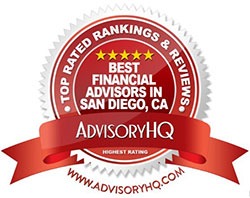In our recent article, Retirement Planning Update: SECURE Act 2.0, we discussed some of the key features of the Act as they pertain to retirement planning. Here are some additional noteworthy features of SECURE Act 2.0.
Reduced Penalties for missing RMDs
Along with moving back the Required Minimum Distribution (RMD) beginning age to 73 and eventually 75, the bill reduces the steep 50% penalty for failing to take your RMD to 25%. The penalty can be further reduced to 10% if you take your distribution and file a corrected tax return in a timely manner. In addition, Roth accounts in employer plans will be exempt from RMDs starting in 2024.
Qualified Longevity Annuities get a boost
A Qualified Longevity Annuity Contract (QLAC) is a special annuity contract that can be purchased with retirement funds. The QLAC doesn’t start to pay out until as late as your 85th birthday, but also isn’t included in your RMD calculation. They’re designed to shift your income to help provide a safety net later in life. The maximum amount you can put into a QLAC was raised from $145,000 to $200,000 and the annual limit is now indexed for inflation.
GUIDES
The Essential Guide to Retirement Planning
A 4-part series that answers key questions about building your plan, positioning your investments, and more.

Changes to Qualified Charitable Distributions (QCDs)
The charities eligible to receive QCDs now includes Charitable Remainder Trusts and Charitable Gift Annuities. If you are over 70½, you can gift up to $50,000 from your IRA directly to these specialized philanthropic vehicles.
Unused 529 Plan assets can transfer to a Roth IRA
Starting in 2024, you can shift up to $6,500 per year (to a maximum of $35,000) of unused funds from a 529 plan to a Roth IRA for the plan beneficiary. There are important restrictions, like the plan having to be in place for at least 15 years, but this does help ease the concern some parents may have about ‘over-saving’ for college.
Emergency Savings Roth Accounts
Starting in 2024, employers will be able to offer Roth-eligible “Emergency Savings Accounts” to their non-highly compensated employees. Contributions would be capped at $2,500, or a smaller amount set by the employer. The account may only be invested in principle-protected assets. Withdrawals can only be made for hardships, but unlike normal ordinary IRS hardship withdrawal rules, employees need only attest that they meet IRS hardship criteria, and no documentation is required. The early withdrawal penalty and the 5-year waiting period for withdrawals do not apply to these accounts.
ACCREDITATIONS & AWARDS
We’re proud to have been honored by some of the organizations in our industry.

Student Loan Payment “matching”
Starting in 2024, employers will be able to ‘match’ employee student loan payments by making matching payments to retirement accounts. This should allow workers an extra incentive to save while paying off educational loans.
How to navigate retirement planning changes
Retirement, tax, and investment changes are constantly happening. It pays to work with a financial advisor who you can trust to look after your best interest. At Blankinship & Foster, our Wealth Management service includes in-depth and proactive retirement and tax planning. We create a plan to maximize retirement income, considering all income sources, expenses, benefits, and withdrawal strategies. Contact us to learn more about how we can help bring clarity, confidence, and direction for your financial future.
Disclosure: The opinions expressed within this blog post are as of the date of publication and are provided for informational purposes only. Content will not be updated after publication and should not be considered current after the publication date. All opinions are subject to change without notice, and due to changes in the market or economic conditions may not necessarily come to pass. Nothing contained herein should be construed as a comprehensive statement of the matters discussed, considered investment, financial, legal, or tax advice, or a recommendation to buy or sell any securities, and no investment decision should be made based solely on any information provided herein. Links to third party content are included for convenience only, we do not endorse, sponsor, or recommend any of the third parties or their websites and do not guarantee the adequacy of information contained within their websites.

